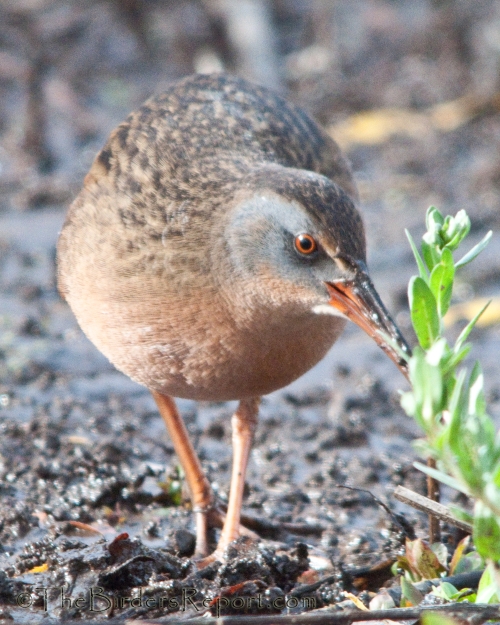 Virginia Rail photos by Larry Jordan
Virginia Rail photos by Larry Jordan
Lucky enough to get out of work a bit early one day last month, I headed over to Lema Ranch to follow up on a lead from my friend Debbie who spotted a Virginia Rail (Rallus limicola) out in the open the previous day. We see Soras at Mule Pond all the time but I had never seen a Virginia Rail there before. As a matter of fact, I had only seen a Virginia Rail once before anywhere.
As I approached the pond I spotted the rail right away. It was exactly where she said it would be, foraging in the mudflats for invertebrates. The sun was behind and to the right of the bird, not the best light for photographing, but I took several shots where I was kneeling in case this usually secretive bird decided to beat it back into the bulrush.
If startled, the Virginia Rail will usually run to escape danger, but according to Birds of North America Online, they may also dive and swim, using their wings to propel themselves underwater. Who woulda thought that?
Once I was satisfied that I had some good photos, I slowly got up and worked my way, in a huge circular path away from the bird, toward the pond where I could get a better angle and have the sun at my back.
As I sat motionless for quite awhile, wrapped up in the bird’s search for food, it would occasionally look up at me, then carry on as if I wasn’t there.
Virginia Rails breed predominantly in freshwater wetlands like Mule Pond, but nests have also been reported in salt marshes. Shallow water, emergent cover, and substrate with high invertebrate abundance are thought to be the most important features of their habitat1.
It was fun watching this bird probing the mudflats, coming up with what looked like small worms most of the time. They eat a variety of insect larvae, worms, aquatic invertebrates and small fish but they also eat aquatic plants and the seeds of emergent plants1.
Some of the photos I got did show the bird with worms in its beak, but they were blurred, for the most part due to the combination of being in the shade of the bulrush and the rapid thrusting motion the bird used to probe the mud and pull up the little morsels. This short video shows the Virginia Rail’s feeding behavior better than the still shots.
I spent over thirty minutes at the Virginia Rail show. It was hard for me to tear myself away.
As this rail worked his or her way along the mudflats away from me, I picked up my gear and slowly followed to an area with deeper water and good light.
Notice that the birds beak is covered with mud in almost every photo. As we came to the deeper water, I got some shots showing the bright orange bill and the bird actually probing the mud.
I took one last shot as my star Virginia Rail walked off with the still water reflecting those beautiful rusty colors and that cute upturned tail following right behind.
To see more great bird photos, check out Bird Photography Weekly and, while you’re at it, why don’t you share some of your photos too!
References: 1 Birds of North America Online

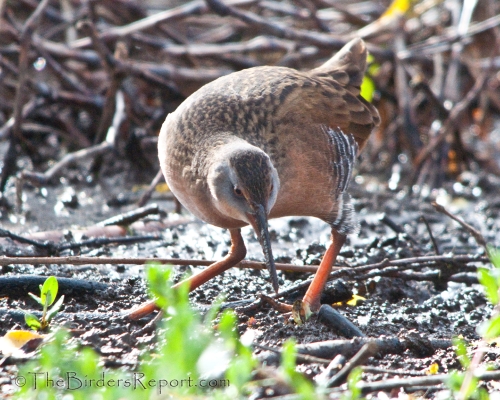
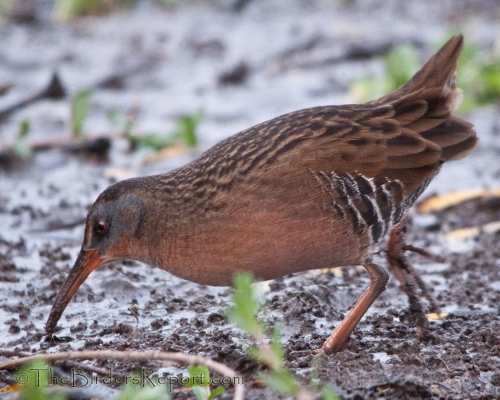
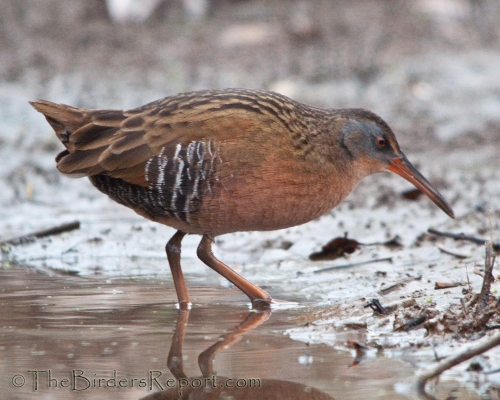
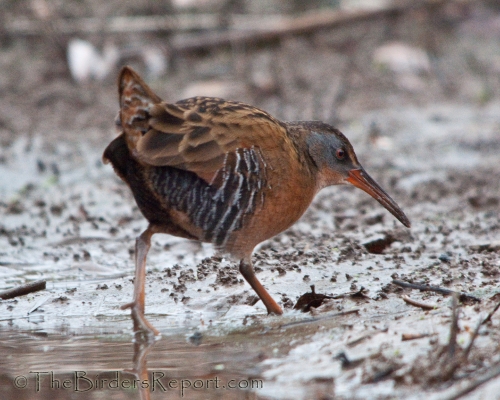
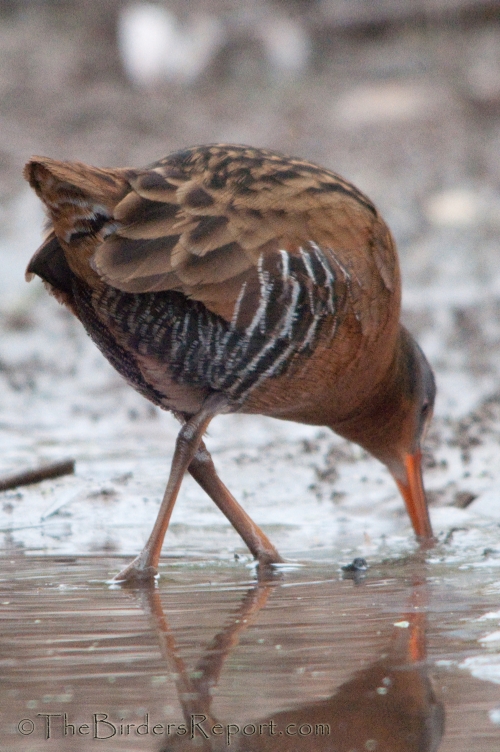
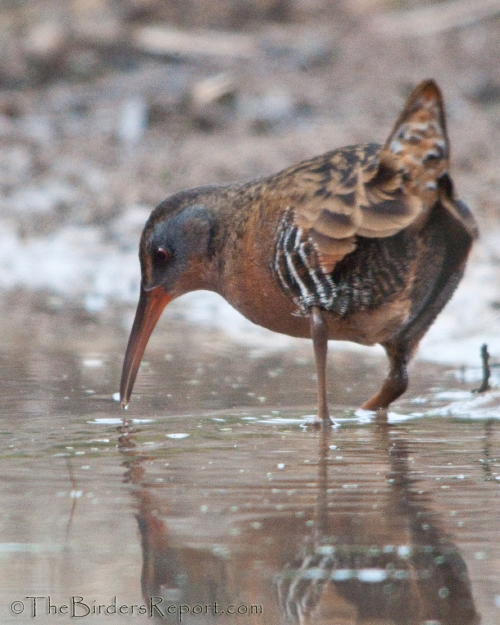
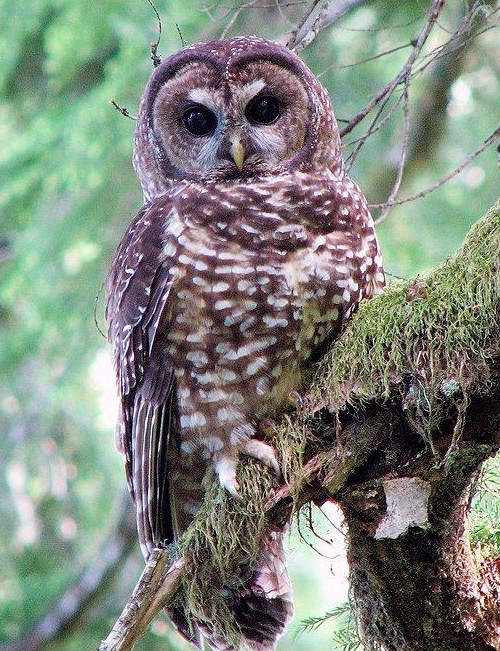 Spotted Owl photo by Chris Warren
Spotted Owl photo by Chris Warren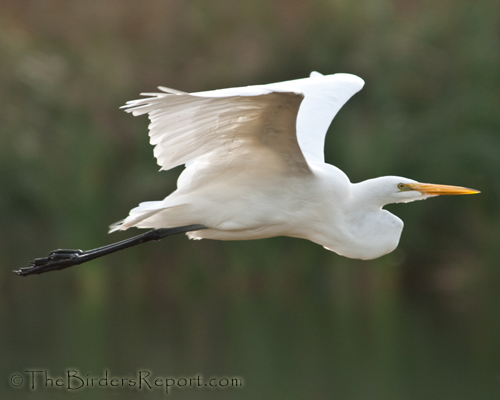
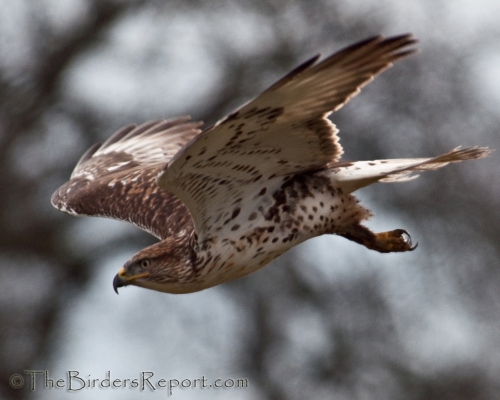



Social Media Connect